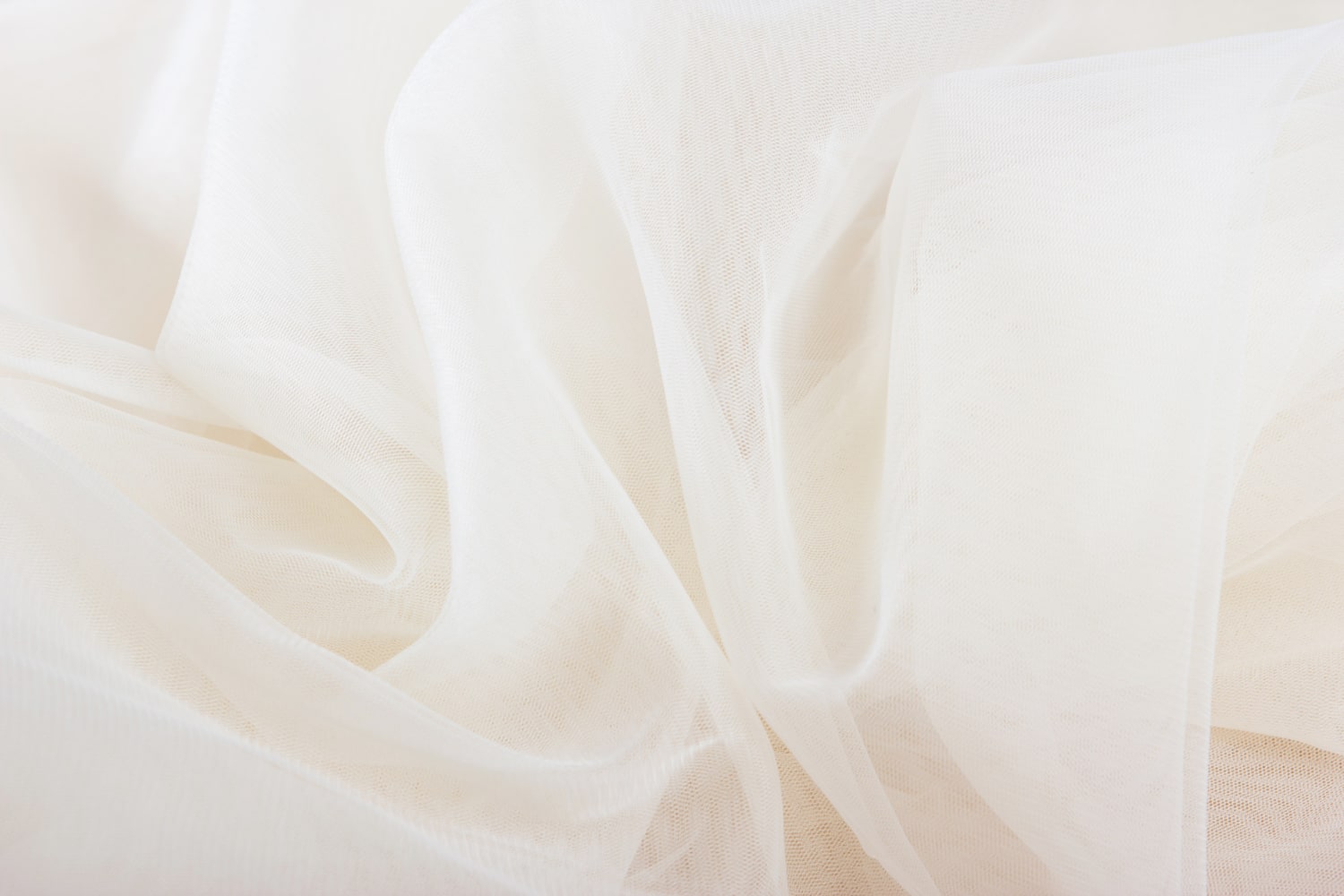Silk organza: transparencies of excellence for haute couture
Among the most evocative materials on the textile scene, silk organza holds a place of honor. Lightweight, impalpable and at the same time structured, this precious fabric is a symbol of refinement that has been able to traverse the ages, keeping its ethereal charm intact. Used since the 18th century to make evening gowns, veils and petticoats, today it is the star of international catwalks, shaped by the skilled hands of the most prestigious ateliers.
The characteristics of silk organza
Made of 100 percent natural silk yarn, organza is distinguished by a sophisticated transparency and a crisp hand, which allows the creation of sculptural volumes and plays of overlap. The secret to this rigidity lies in the twisting of the threads during weaving, which produces a stable yet lightweight fabric with a slightly grainy texture.
Its barely shiny surface returns light in a delicate, iridescent way, making it perfect for dramatic garments, architectural veils, balloon sleeves and layered structures. It is no surprise, then, that silk organza is beloved for both bridal creations and haute couture clothing.

An ideal medium for artistic workmanship
The semi-rigid structure of organza makes it ideal as a base for high-precision decorative work, particularly in the field of embroidery. This fabric makes it possible to work with very fine details without compromising the lightness of the finished garment. Techniques such as lace effect embroidery, for example, find in organza the perfect support to enhance solids and voids, generating floral or geometric patterns that seem to float in the void.
The aesthetic yield is at its best when very fine yarns, beads, micro-crystals and light stitches are combined, taking advantage of the transparency of the background to enhance the contrast with the decorations. In addition, organza allows for clean edging and sharp cuts, maintaining an understated elegance even in complex workings.
Contemporary trends: organza as a creative language
In the contemporary fashion scene, silk organza is also being rediscovered in an experimental way. It is no longer only synonymous with romanticism and lightness, but also a material of rupture, capable of creating architectural volumes, oversize capes, layering games and material contrasts.
More and more designers are using organza in combination with technical fabrics, jersey, vinyl and leather, to build hybrid silhouettes. In this context, webbing, ribbon and mignon appliqués are inserted as functional and decorative details, emphasizing tailored lines or creating dynamism through hanging elements, ribbing and multilayer layering.
The role of craftsmanship in the treatment of organza
Despite its modern potential, silk organza remains a material that requires technical expertise and a craftsman's hand. Any intervention - from sewing to the application of decorative elements - must take into account the delicacy of the fabric and its tendency to fray. For this reason, edge finishing is often done by hand, by means of invisible hems, open edging or minute topstitching.
The application of embroidery or three-dimensional elements is also done with the utmost care: it is essential to prevent weight or tension from ruining the fabric structure. Hence the importance of relying on specialized professionals who can combine technical precision and aesthetic sensitivity.
Versatility and sustainability: organza looks to the future
Today, silk organza is also offered in eco-responsible variants, through the use of organic silk or dyes with low environmental impact. This transition to more sustainable fashion does not affect its aesthetic characteristics, but further enhances its uniqueness. Thoughtful brands are integrating organza into their green capsule collections, reinterpreting it with minimalist cuts and neutral palettes.
The versatility of organza is thus confirmed in every context: from classic couture to experimental designs, from bridal collections to eco-friendly lines, without ever giving up its elegant and impalpable essence.